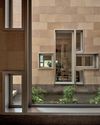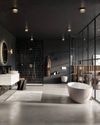
In the old days, tendrils of fragrant smoke would gently waft up from Thung Siew Farm’s rows of 6m x 6m tobacco drying barns, and drift up into the ether above Chiang Mai’s San Pa Tong district.
Today, the only smell to be found on this former tobacco processing estate, built-in 1955 by a Thai prince, is the scent of fresh coffee being brewed in the onsite café.
The adaptive reuse of the lush, tree-shaded Kaomai Estate 1955 began in 1995, when the late owner, having decided that tobacco curing was no longer commercially viable, converted 18 of the 50 barns into guest rooms and opened a peaceful getaway.
More recently, it has been evolving anew as his like-minded son, Chak Cherdsatirakul, brings in experts – conservationists, botanists, arborists as well as architects – in the hope of giving Kaomai Lanna Resort, as it is known today, a cultural and ecological makeover that helps it stand out in an ultra-competitive tourism market.
Currently, the creeper-covered barns housing the resort’s 34 guest rooms are under renovation as part of this drive to increase the magnetic allure of the resort.
Also, a mound of earth flanking them has been turned into a grassy amphitheater where outdoor activities are now held.
Architecturally, however, the most notable part of this multi-pronged project – the part that won a UNESCO Heritage Award for New Design in Heritage Contexts in late 2018 – are the derelict barns that had sat empty for decades and, in some cases, been engulfed by nature.
Around a dozen of these distinctive structures are now the evocative centerpiece in Kaomai Estate 1955: a narrative-driven conservation project that, in the words of UNESCO, “adds a layer of meaning to the hotel complex, providing a nostalgic evocation of the local history and agrarian heritage associated with Chiang Mai’s once-thriving tobacco industry”.
هذه القصة مأخوذة من طبعة Issue 112 من d+a.
ابدأ النسخة التجريبية المجانية من Magzter GOLD لمدة 7 أيام للوصول إلى آلاف القصص المتميزة المنسقة وأكثر من 9,000 مجلة وصحيفة.
بالفعل مشترك ? تسجيل الدخول
هذه القصة مأخوذة من طبعة Issue 112 من d+a.
ابدأ النسخة التجريبية المجانية من Magzter GOLD لمدة 7 أيام للوصول إلى آلاف القصص المتميزة المنسقة وأكثر من 9,000 مجلة وصحيفة.
بالفعل مشترك? تسجيل الدخول

Home Is Where The Heart Is
A vacation house is reimagined for a multi-generational family to gather for holidays in the bucolic setting of Yongjia in Zhejiang, China.

the natural balance
Inspired by the serene beauty of dewdrops, the Antao Collection by Villeroy & Boch transforms bathrooms into wellness sanctuaries, combining sustainability with timeless elegance.

inspiring creativity and exploration
The new Hafary House at Lavender reflects the brand’s vibrancy and innovation, as well as provide an inspiring and engaging space for customers.

balancing act: nature and humanity
In this inspiration-led series, we asked Jay Liu and Alex Liu, co-founders of Right Angle Studio, to dream up a unique interior concept using mainly items from Space Furniture.

rethinking, remaking, reframing
Aoki Akio, the founder of DESIGNART TOKYO discusses the importance and legacy of Tokyo's eminent art and design event, particularly for young creatives.

rebuilding communities
Shift2024, the much-anticipated conference returns with a stellar line-up of prolific architects making their mark in Asian urban design.

unparalleled italian craftsmanship
Filippo Arnaboldi, Chief Executive Officer of Frette, tells us how this luxury lifestyle Italian brand is moving forward with times yet not forgetting about its existing legacy.

where the mountain meets the sea
This bespoke hillside residence features modern design elements, natural touches, and panoramic ocean views.

tailored for the curious explorer
The new Alma House at the New Bahru enclave reflects the collaborative spirit of a school environment.

tranquil sanctuary
The recently launched Banyan Tree Higashiyama Kyoto, designed by Kengo Kuma, fuses traditional Japanese architecture with modern elegance.